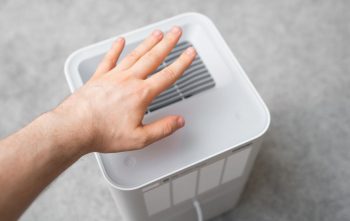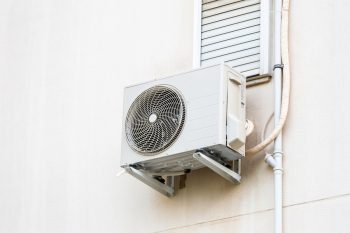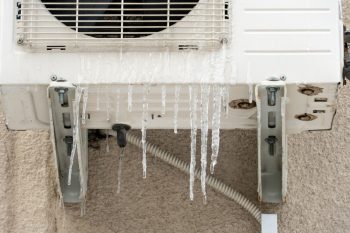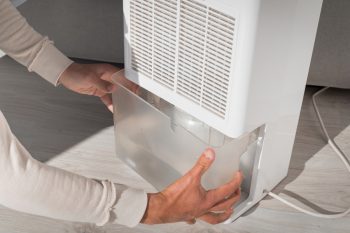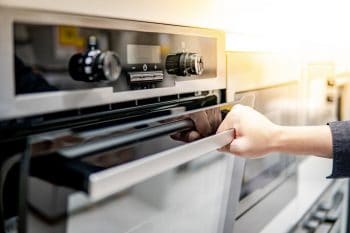
An AC condenser is a crucial component of your air conditioning system, playing a pivotal role in cooling your indoor environment. But what does an AC condenser look like, and how can you identify it among other components of your air conditioning unit? Let’s dive in and explore the essential aspects of an AC condenser.
An AC condenser, part of the outdoor unit of an air conditioning system, typically looks like a rectangular box with a series of tubes and fins similar to a radiator. Its size varies depending on the tonnage of the air conditioning system. It is usually made of materials such as copper, aluminum, stainless steel, and plastic, and is responsible for cooling down and condensing the incoming refrigerant vapor into a liquid state, releasing the heat absorbed from the indoor environment.
AC Condenser: An Overview
An AC condenser, typically located in the outdoor unit of a split-system air conditioner, is responsible for the heat transfer process that expels heat from the refrigerant. Its main purpose is to cool down and condense the incoming refrigerant vapor into a liquid state, releasing the heat absorbed from the indoor environment.
What Does an AC Condenser Look Like?
AC condensers are usually rectangular and part of the outdoor unit of a central air conditioning system. They consist of a series of tubes with fins around them, similar to a radiator but usually thinner. The size of the condenser coil is determined by the tonnage of the air conditioning system. A 1.5-ton unit, for example, might have dimensions around 31″ wide, 28.5″ deep, and 31″ high, while a 5-ton unit could be around 38″ wide, 35″ deep, and 45″ high.
Key Components of an AC Condenser
An AC condenser unit consists of several key components:
- Condenser Coil: The heat exchanger that releases heat from the hot refrigerant.
- Compressor: It pressurizes the refrigerant, making it hotter so that it can release more heat.
- Blower: It circulates air across the condenser coil, helping to dissipate heat.
- Fan: It cools the condenser coil by pulling heat from the refrigerant and expelling it into the surrounding environment.
Common AC Condenser Materials
The construction of an AC condenser involves materials such as copper, aluminum, stainless steel, and plastic. Copper and aluminum are commonly used for condenser coils due to their excellent heat conduction properties. Stainless steel and other corrosion-resistant metals are used in various components of an air conditioner, including the condenser.
Identifying an AC Condenser
To identify an AC condenser among other parts of an air conditioning unit, look for its location (typically in the outdoor unit), its appearance (similar to a radiator), its function (releasing heat absorbed by the refrigerant), and its connections (connected to the compressor and the evaporator through refrigerant lines).
Types of AC Condensers
There are different types of AC condensers, mainly categorized by their cooling method: air-cooled condensers, water-cooled condensers, and combined air and water-cooled (evaporative) condensers. Their appearance varies based on their cooling method and construction.
Common Issues with AC Condensers
Some common issues with AC condensers include reduced cooling capability, strange noises, frosting or icing, leaking fluid, and bad smells. If you notice any of these signs, it is essential to address the issue promptly to avoid further damage to your air conditioning system.
Maintaining an AC Condenser
To ensure the longevity of your AC condenser, it’s crucial to undertake regular maintenance checks, clean the condenser coils, inspect the outdoor unit, discharge the capacitor, replace or clean air filters, inspect refrigerant lines, tighten electrical connections, and keep the area around the condenser clean.
By understanding what an AC condenser looks like and how it functions, you can better maintain your air conditioning unit and ensure its efficiency and longevity. Remember, if you’re unsure about any of these procedures or if your AC unit requires more extensive repairs or maintenance, it’s always best to consult a professional HVAC technician.
Frequently Asked Questions
What is the function of the Compressor in an AC Condenser?
The compressor in an AC condenser pressurizes the refrigerant, increasing its temperature. This allows the refrigerant to release more heat when it gets to the condenser coil.
What is the role of the Blower in an AC Condenser?
The blower in an AC condenser circulates air across the condenser coil. This helps to dissipate the heat from the refrigerant, cooling it down.
How often should I clean the condenser coils of my AC unit?
The condenser coils should be cleaned at least once a year, preferably before the cooling season begins. However, if your AC unit is located in a dusty environment or used extensively, you might need to clean the coils more often.
What is the difference between air-cooled and water-cooled AC condensers?
Air-cooled AC condensers dissipate heat into the surrounding air, using a fan to increase air circulation. Water-cooled AC condensers, on the other hand, use water to absorb heat from the refrigerant. Water-cooled condensers are generally more efficient but require a constant water source, making them less suitable for dry climates.
What should I do if I notice leaking fluid from my AC condenser?
If you notice a leaking fluid from your AC condenser, it’s likely to be the refrigerant. This could indicate a leak in the refrigerant lines or a problem with the condenser itself. It’s recommended to turn off the AC unit and call a professional HVAC technician to inspect and repair the issue, as refrigerant can be harmful if inhaled or touched.



